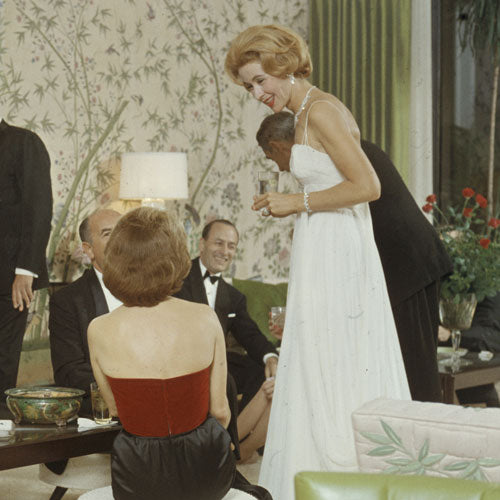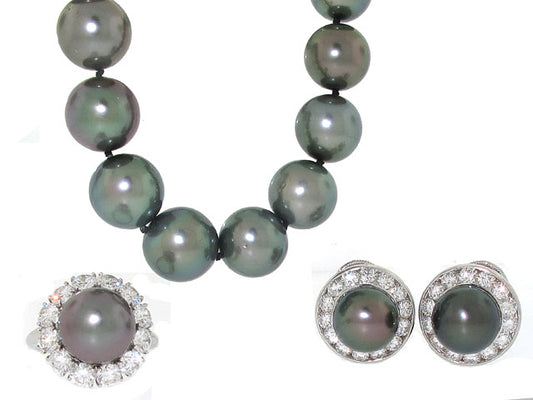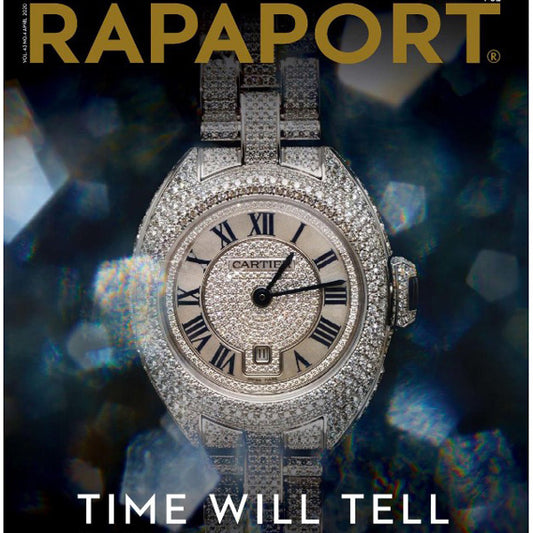Halloween is right around the corner and no time is more appropriate for the topic of mourning jewelry and Memento Mori. Traditionally, the month of October and its ultimate culmination on the 31st have been associated with dark or seemingly macabre death rituals. The ancient Gaels celebrated the end of the harvest and considered the final day of the month to be the point of the year in which the veils between the world of the living and the dead overlapped. The transitional period between October and November, and its archaic ritualizations, were incorporated into the Catholic calendar. November 1st then became known as “All Saints’ Day” or “All Hallows Day” and the preceding evening became “All Hallows Eve” or the shortened “Hallowe’en.” In many European traditions, All Saints’ Day is still a day in which one goes to visit and bring flowers to ancestral graves.
Diamond and Ebony Skull Ring
The creation of the Halloween holiday coincides with the Mexican festivities surrounding Dia de los Muertos – the Day of the Dead. Enacted as a celebratory remembrance of departed family members, this tradition traces its roots to the pre-Colombian period. Contemporary traditions usually include building an altar, bringing marigolds to graves, decorating with Calacas (skull or skeleton figures) and creating or eating Calaveras de azucar, intricately decorated sugar skulls.
Sue Gragg Diamond Skull Bracelet
Cultures the world over have diverse and fascinating rituals to celebrate and honor the deceased. While we may devote specific time periods to the practice, we also have daily ways with which to remember our loved ones. Two of the most fascinating of those ways are in jewelry: mourning jewelry and Memento Mori.
Sue Gragg Skull and Crossbones Pendant
“Memento Mori” is a Latin phrase that translates to “Remember You Must Die.” While on the surface, this seems to be both morbid and a bit threatening, it is in reality a call to action. For centuries, people have worn the dark symbols of death as a way to remind themselves to live full lives. Common themes include skulls, skeletons, and funerary motifs in which coffins and bones figure prominently. Today, Memento Mori appear frequently in high fashion – most notably in the famous skull products of Alexander McQueen.
Lydia Courteille Skull Ring
The taste for Memento Mori soared in the Victorian Age. The Civil War in the U.S. drove the fashion for mourning jewelry while the death of Prince Albert and the subsequent lifelong mourning of Queen Victoria did the same in the U.K. Indeed, the latter half of the century (following both the aforementioned events) spawned an increased fascination with death in Anglo-European culture. Spiritualism and spirit photography – as well as the Victorian taste for taking elaborately staged portraits of the recently deceased – and a developing interest in the occult kept Memento Mori alive and well. The rise of the detective novel and famous crime cases, such as Whitechapel’s Jack the Ripper, kept the darker aspects of life in the public conscious while horror firmly established itself as a literary genre in the same period – think Dracula, Poe and Dr. Jekyll & Mr. Hyde.
Lydia Courteille Skull and Crossbone Earrings
Today, we have streamlined and modernized our fascination with Memento Mori. Skulls continue to figure on runways the world over. Creators of horror fiction, such as Stephen King, are universally recognized as masters of their craft – and continue to create highly marketable material. Macabre television shows such as AMC’s The Walking Dead, or one of the many vampire stories such as Twilight, the new Dracula show or the CW’s Vampire Diaries show our continued preoccupation with the dark and spooky.
Bochic Colored Diamond Skull Ring
And, even as we progress through the 21st century, we still adorn ourselves in those symbols of death that remind us to live – and live well.














